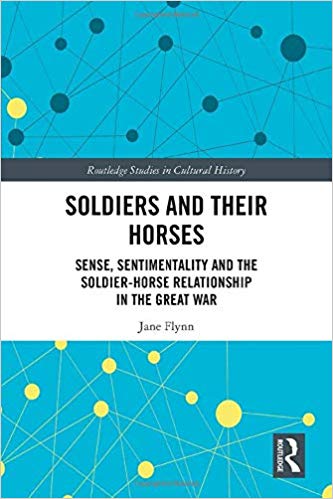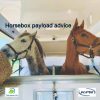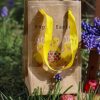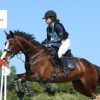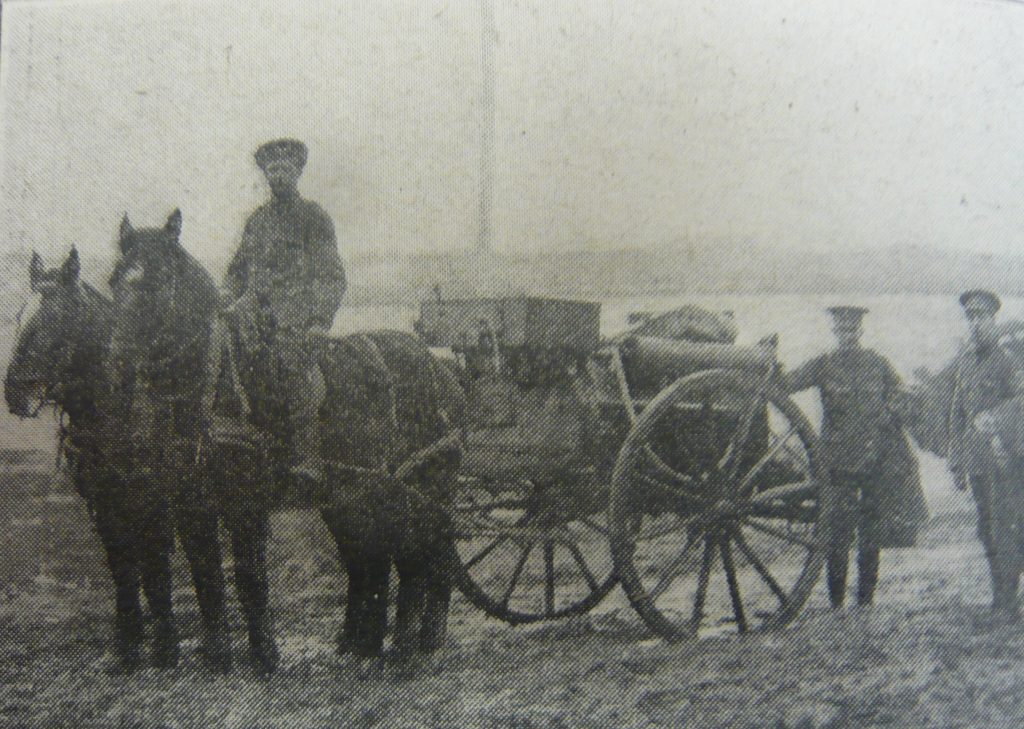
Soldiers and their Horses – Training Recruits in The Great War
When Britain declared war on Germany on 4th August 1914, the British Army immediately set about mobilising its human and equine resources. In just two weeks, its horse strength was increased from 19,000 to 53,000, and this demand only increased as the War progressed. Not only did the British Army require horses, but also men trained to work with them.
Horses were still absolutely essential in modern warfare. They were used to supply ammunition to the Artillery’s guns, and to haul the guns themselves. Packhorses carried water, rations and equipment over terrain impassable to motor vehicles. Sappers and engineers used horses when they laid telegraph cables, constructed bridges and repaired roads. The cavalry reconnoitred, harried the enemy and supported the Infantry when the Army was on the move.
Horses were used intensively by every branch of the Army and to move every conceivable item too heavy or cumbersome to be moved by man alone. The War could not have been waged without the soldiers and their horses.
In an army that was still overwhelmingly horse-powered, it was absolutely essential that all soldiers given ‘ownership’ of a horse were taught the rudiments of horse management. Training began on the ground, where recruits learned how to groom their horses, muck out, issue water, hay and feeds, tack up, clean equipment, and handle their horses safely. These tasks, collectively known as ‘Stables’, would become an unwavering part of the horse-soldier’s daily routine – in peace and in war.
The recruits’ day began with Reveille at five o’clock and Stables from 5:15am until 6:15am. After this, recruits had a brief break for their own breakfasts and, other than ‘dinner and rest’ at midday, spent the remainder of their time in training or on duty. Evening Stables was at 6:30pm, after which recruits were free, unless on guard duty when their day ended at 10:00pm. As well as their instruction in Stables, recruits destined for horsed regiments were put through intensive courses of instruction in ordinary drill, wagon drill, riding, and shooting.
For many recruits, horses were a terrifying prospect. In daily life, horses were gradually being replaced by machines and motors, and it could no longer be assumed that recruits would know anything at all about horses. The only option was to ensure they were swiftly trained. For new recruits, their education began with ‘Stables’ and the daily routines that would become central to their daily lives as horsed soldiers. They were taught the rudiments of horse care: grooming; mucking out; harness cleaning; issuing water, hay and feeds; harnessing and tacking up; and in handling their horses and vehicles safely and efficiently. They were taught about the vehicles and equipment they would be using, and how to properly load a pack animal. They were taught to ride. At every stage, the emphasis was on ensuring their horses were properly maintained, and little sympathy was wasted on the ‘duffer or malingerer’.
Not only were the men of Britain’s New Army novice horse ‘owners’, the majority were also novice riders. Instruction began in the comparative safety of the ‘Riding School’ where the Riding Master taught recruits how to mount and dismount and how to ride at walk, trot, and canter. Here, the ‘inexorable discipline’ of the British Army was instilled into all, and complaints were quite useless. Recruits later recalled Riding School as riding ‘round and round and round’ while the Riding Master stood in the centre with a long whip to ‘tickle the horses up’. Recruits regularly fell off their horses in a ‘chaos of trotting horses mixed up with rolling human bodies’. Added to this education were the drills and mounted orders that also had to be learned. Such an intense program of riding instruction caused the novice riders considerable anxiety and physical discomfort, but as many soldiers remembered, ‘The horses were always much better cared for than the men’.
Once on active service the soldiers’ newly acquired horsemanship was tested to its limits. Artillery drivers worked as a team of three drivers, two gunners, the gun limber, and six horses, with each driver riding his ‘saddle horse’ and responsible also for his ‘off horse’. Controlling two horses as part of a team of six was a considerable test of skill, even before the actions of the enemy were taken into account. The job was no less difficult for the transport driver, sat atop a wagon, riding a horse as it drew a limber, or leading a pack-mule, while negotiating terrain strewn with potholes, mud, barbed wire, and debris. Added to this, was the ‘nerve wracking’ knowledge that each soldier and his horse presented ‘a large and vulnerable target’ to the enemy and were ‘under constant risk from spasmodic harassing shell fire’.
The horses and mules were central to the daily life of the soldier, his team, his battery, and the unit to whom they belonged. Living and working together, soldiers and their horses shared the dangers and hardships of war for months, and often years. Soldiers came to rely on their horses, and their horses in them.
© Flynn J., Soldiers and their Horses: Sense, Sentimentality and the Soldier-Horse Relationship in The Great War, Routledge, New York, 2020. Please do not copy or reproduce the text and/or images in this post without the written permission of the publisher (Routledge) and author (Jane Flynn).
The story behind Soldiers and their Horses
Jane Flynn – Author
That I would eventually came to write a book about horses was almost inevitable. As a pony-mad, pony-less little girl I dreamt ponies. Each week, I waited excitedly for my riding lesson at my local riding school. I read my copy of Horse and Pony magazine from cover to cover and back again. I drew horses, I wrote about horses, and I wished I had my own pony to love. I wasn’t fussy – any pony would do. I had arguably the best cared for hobby horse in Oxfordshire. It wasn’t until I reached adult-hood that I finally achieved my life-long ambition.
Toby was a bit of a legend. He was a 15:1hh bright bay show cob. I loved him dearly. He had his moments, as do we all, but he went everywhere, and did a bit of everything. As our bond grew, I increasingly found myself wondering what it had actually been like to take horses into war. The only way to do this was to find out what the soldiers themselves had thought about their horses. As I read their letters, diaries, and memoirs, and listened to their voices, I was struck by stories that were by turns poignant, irreverent, compassionate, and often, very funny.
In 2016, I received a PhD from the University of Derby for my research into the soldier-horse relationship. I am internationally known for my work and have given presentations at conferences and events throughout the United Kingdom and the USA. If you are interested in commissioning a piece of writing, or organising a talk for your club, society, or organisation, please do get in touch via the contact page on my website www.soldiersandtheirhorses.com.
Soldiers and their Horses is now available from all good book retailers!


